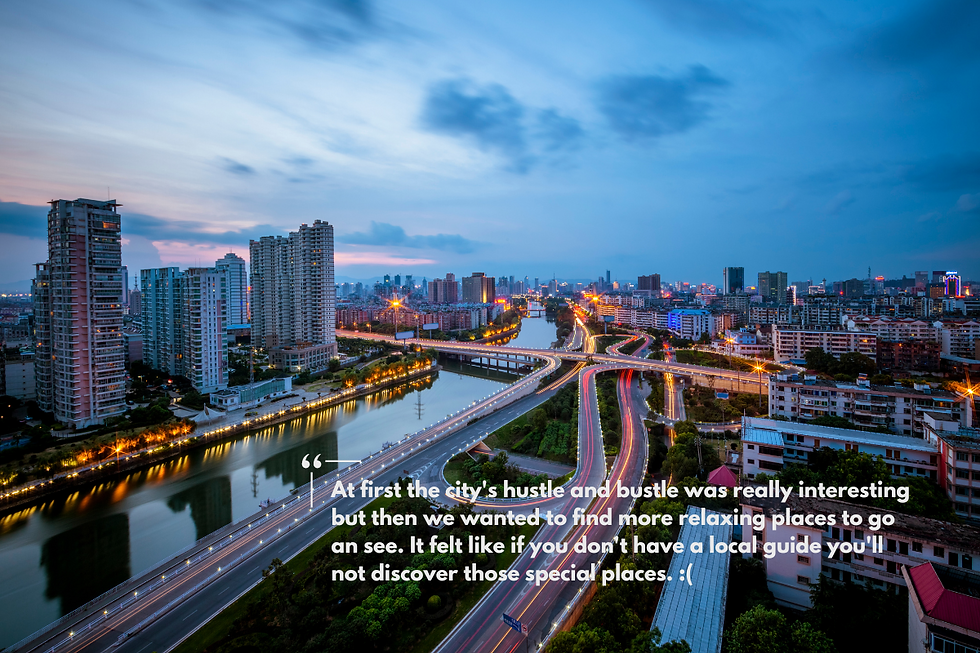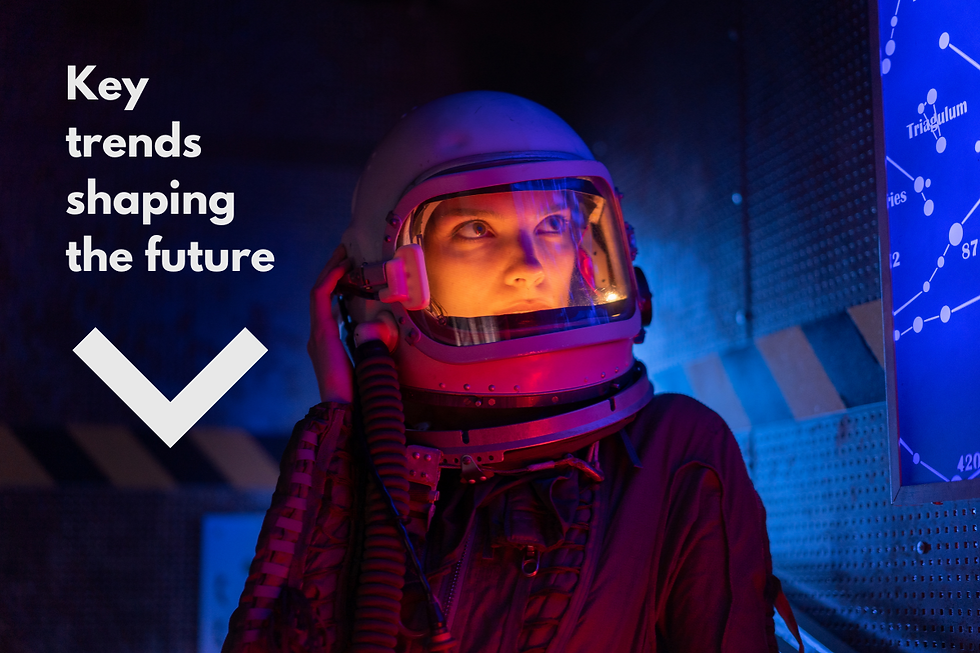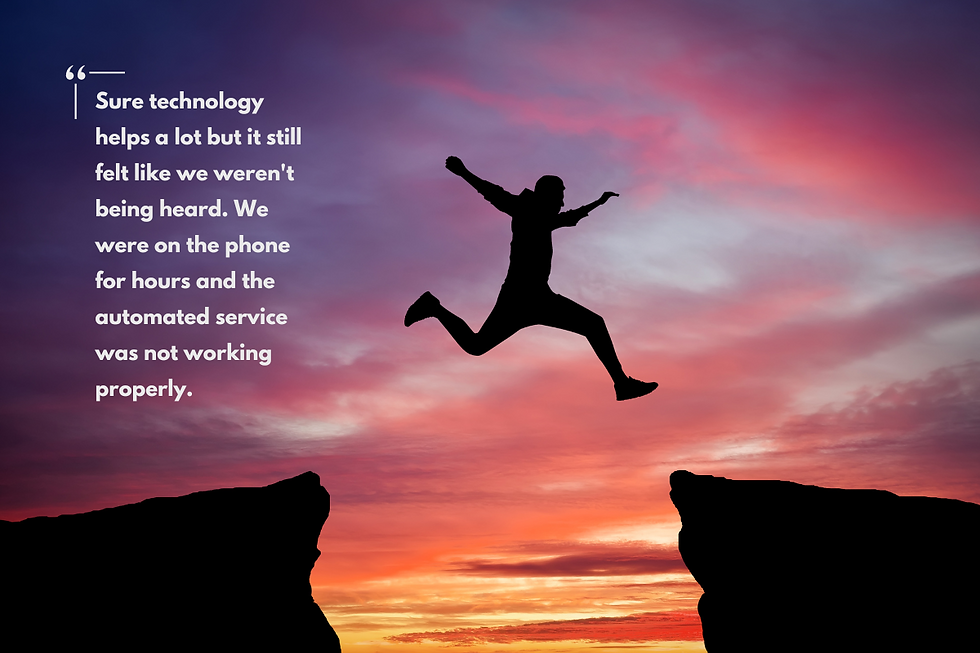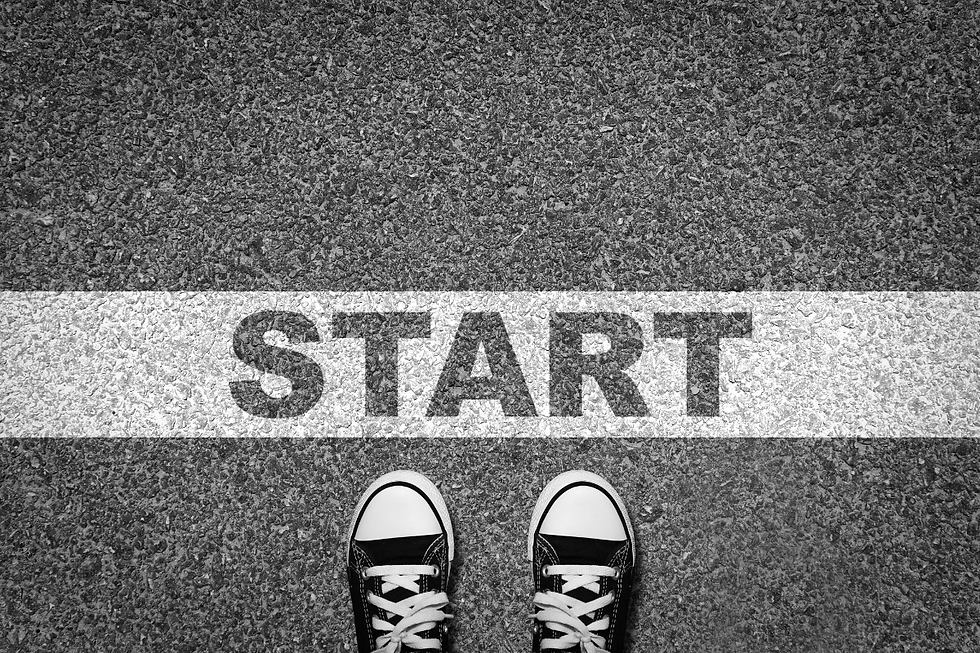Seamless Travel: Unlocking Transportation's Potential with UX Research
- CPR

- Feb 8, 2024
- 9 min read

Inside This Article
Connecting People, Shaping the Future: How UX Drives Seamless Transportation
From Horse-Drawn Carriages to AI Cars: A UX Journey Through Time
User-First: Putting People at the Center of Transportation Innovation
Trending Tech Shaping Your Trip: Smart Cities & Real-Time Data: Navigating Like a Pro Self-Driving Cars: UX Research Smooths the Road Ahead Tap & Go Payments: Farewells to Fumbling for Tickets Eco-Friendly Travel: Sustainable Rides for a Greener Future Safe Public Transport: Design for Confidence and Ease On-Demand Rides: Your Personalized Mobility Solution Last Mile Solved: Seamless Connections, No Stress Bike & Scooter Sharing: Easy Access, Happy Riders Smart Navigation Apps: Your Journey at Your Fingertips Hassle-Free Ticketing: Simplifying Every Step Everyone on Board: Inclusive Design for All Seamless Multimodal Travel: Switch Between Rides with Ease
UX Research: The Secret Ingredient for Success: Testing & Feedback: Making Sure Tech Works for You Design with Empathy: Feeling Safe and Comfortable on the Road Personalized Experiences: Your Needs, Your Ride Inclusive Design: Everyone Deserves a Smooth Journey
Why UX Matters for Your Transportation Business:
Happy Users, Happy Business: More People Choosing You Save Money, Fix Issues Early: Smart Design = Less Cost Build a Stellar Reputation: Seamless Rides = Positive Buzz Run More Efficiently: Streamlined Systems, Lower Costs Future-Proof Your Business: Adapt to Changing Needs
Emerging Tech & the UX Advantage: Self-Driving Cars: Smooth Transitions & User Confidence AI-Powered Comfort: Cars That Respond to Your Mood AR Navigation: Real-Time Info Without Distraction Personalize Your Ride: Voice Control & Accessible Options Secure & Easy Access: Biometrics Done Right
Unlocking a Smooth Future: Understand Your Users: What They Need & Want Design User-Centric Solutions: Rides Tailored to You Improve What You Have: Make It Even Better Stay Ahead of the Curve: Be Ready for What's Next
Let's Build a Future Where Everyone Enjoys the Ride: Partnering for User-Centric Transportation
5 Key Takeaways:
UX research: The secret sauce to making tech truly human-centered in transportation.
Seamless journeys, not just tech marvels: UX bridges the gap between innovation and user adoption.
Accessibility and sustainability matter: UX research for everyone, for a greener future.
Future-proof your business: Invest in UX research to understand evolving user needs and stay ahead.
Don't just move people, move them happily: Prioritize user experience for memorable journeys.
Connecting Modes, Enhancing Experiences – The UX Frontier in Transportation

The evolution of transport has always gone hand in hand with the development of new technologies. Nomadic tribes left their tracks in the road, carrying food and herding domesticated animals. The invention of the wheel allowed humans to transport things from one place to another easier and faster. The modern locomotive was an immense development for the passenger transportation and goods industries, and the list goes on.
We've always wanted to get to places faster, to cheat time, to gain more time. This deep-seated human wish has made the transportation industry one of the most important societal pillars, today.
The way we navigate our world is undergoing a revolutionary transformation. From bustling megacities to rural landscapes, the transportation industry is embracing innovation, driven by a growing demand for seamless, user-centric experiences. At the forefront of this evolution lies UX research, a powerful tool that unlocks the true potential of transportation systems, connecting modes, and ultimately, enhancing the entire travel experience.
This article delves into the exciting realm of transportation UX, exploring how user-centered design is shaping the future of mobility. We'll dive into key trends like smart transportation systems, autonomous vehicle integration, and contactless payment solutions, highlighting how UX research guides their development and user adoption. We'll also address crucial aspects like public transportation safety, sustainable urban mobility, and inclusive transportation accessibility, demonstrating how UX research ensures everyone can participate in the future of transportation.
Understanding the Transportation User: More Than Just a Passenger
Before embarking on the UX journey, it's vital to understand the transportation user: their needs, aspirations, and pain points. This user-centric approach goes beyond demographics and preferences; it delves into the emotions, expectations, and even anxieties associated with mobility. By empathizing with users, UX researchers can identify key areas for improvement, fostering a transportation ecosystem that is not only efficient but also enjoyable and stress-free.
Navigating the Future: Key Trends Defining the Transportation Landscape

The transportation landscape is rapidly evolving, presenting exciting opportunities and challenges. Her are some of the key trends shaping the future, and how UX research plays a pivotal role in their success:
1. Smart Transportation Systems: Connected infrastructure, real-time data integration, and intelligent traffic management are revolutionizing how we move. UX research ensures these systems are intuitive, user-friendly, and provide valuable insights to commuters, planners, and authorities alike.
2. Autonomous Vehicle Integration: Self-driving cars and automated transportation options are on the horizon. UX research helps design interfaces, interactions, and safety features that foster trust, understanding, and a smooth transition to autonomous mobility.
3. Contactless Payment in Transportation: Fare gates, ticketing systems, and even in-vehicle purchases are embracing contactless technologies. UX research ensures these solutions are secure, seamless, and accessible to everyone, regardless of their preferred payment method.
4. Sustainable Urban Mobility: Eco-friendly alternatives like bike-sharing, scooter-sharing, and micro-mobility options are gaining traction. UX research ensures these solutions are well-integrated into existing infrastructure, convenient to use, and contribute to a greener future.
5. Public Transportation Safety Measures: Safety remains a top priority in public transportation. UX research helps design secure stations, vehicles, and information systems that instill confidence and empower users to navigate complex networks seamlessly.
6. Future of Ride-Sharing Services: Ride-sharing continues to evolve, offering on-demand mobility solutions. UX research helps refine app interfaces, optimize booking processes, and personalize experiences to cater to diverse user needs and travel preferences.
7. Last-Mile Transportation Solutions: Connecting with final destinations is crucial for a complete journey. UX research helps design solutions like micro-mobility options, on-demand shuttles, and integrated ticketing systems that bridge the gap between different modes of travel.
8. Bike and Scooter-Sharing Updates: Bike and scooter-sharing programs are increasingly popular, but accessibility and ease of use remain crucial factors. UX research helps design user-friendly apps, docking stations, and safety features that encourage wider adoption.
9. Intelligent Transportation Networks (ITNs) UX Redesign for Transportation Apps: Real-time information, personalized recommendations, and seamless intermodal navigation are crucial for future transportation apps. UX research helps design intuitive interfaces, integrate diverse data sources, and provide relevant, actionable insights to users.
10. Real-Time Transportation Updates: Commuters crave reliable and timely information. UX research helps design interfaces that display real-time updates on public transport schedules, traffic conditions, and alternative routes, empowering users to make informed decisions and navigate disruptions effectively.
11. Streamlined Ticketing Processes: Complex ticketing systems can be frustrating. UX research helps design user-friendly ticketing interfaces, integrate different payment options, and offer flexible fare options to cater to diverse user needs and travel patterns.
12. Inclusive Transportation Accessibility: Transportation should be accessible to everyone, regardless of physical limitations. UX research helps design inclusive infrastructure, vehicles, and information systems that ensure equal access and a positive travel experience for all.
13. Intermodal Travel Solutions: Seamlessly connecting different modes of transportation is key to efficient and sustainable mobility. UX research helps design integrated ticketing systems, intuitive navigation tools, and clear wayfinding signage that facilitate smooth transitions between buses, trains, bikes, and other transportation options.
14. Transportation Mode Transitions: Moving between different modes of transportation can be a pain point for users. Luggage handling, waiting times, and confusing signage can create stress and inconvenience. UX research helps design seamless transitions by:
Mapping user journeys: Understanding how users move between different modes of transportation helps identify pain points and opportunities for improvement.
Designing integrated ticketing systems: Single tickets and integrated fare structures for multi-modal journeys ease the hassle of purchasing separate tickets for each leg.
Creating clear wayfinding signage: Intuitive signage and real-time information displays guide users efficiently through stations, airports, and transfer points.
Developing connected apps: Comprehensive apps offering journey planning, real-time updates, and multimodal navigation empower users to seamlessly transition between different modes.
By addressing these concerns, UX research helps create a truly connected transportation ecosystem where users can move freely and efficiently, maximising their journey experience.
The Power of UX Research: Bridging the Gap Between Innovation and Adoption

As these trends illustrate, the transportation landscape is brimming with innovation. However, the success of these innovations hinges on user adoption. This is where UX research comes in, playing a critical role in bridging the gap between cutting-edge technology and widespread user acceptance.
Here's how UX research fuels successful transportation solutions:
User Testing and Feedback: By actively involving users in the design process through testing and feedback mechanisms, UX research ensures new technologies cater to actual needs and address potential usability issues early on.
Empathy-Driven Design: UX research goes beyond functionality, focusing on the emotional aspects of the travel experience. This empathetic approach leads to solutions that not only work well but also feel safe, comfortable, and enjoyable to use.
Personalised User Experiences: With the help of data analysis and user segmentation, UX research facilitates the development of personalized experiences that cater to diverse needs and preferences. This fosters user satisfaction and encourages broader adoption of new technologies.
Inclusivity and Accessibility: By integrating accessibility considerations throughout the design process, UX research ensures that everyone, regardless of abilities, can participate in the future of transportation. This creates a more equitable and inclusive transportation system for all.
Why Does UX Research Matter for Your Transportation Business?
In a competitive and rapidly evolving environment, UX research offers a tangible advantage for transportation businesses. Here are some of the key benefits:
Increased User Adoption: By ensuring user-centric design, UX research fosters user satisfaction and encourages wider adoption of new technologies and services.
Reduced Development Costs: Early identification and correction of usability issues through UX research helps prevent costly rework and delays later in the development process.
Enhanced Brand Reputation: A seamless and enjoyable travel experience fueled by UX research translates to positive word-of-mouth and a stronger brand reputation.
Improved Operational Efficiency: Streamlined ticketing systems, intuitive navigation tools, and efficient use of technology contribute to smoother operations and improved cost-effectiveness.
Future-Proofing Your Business: By understanding user needs and trends through UX research, businesses can remain agile and adapt to the evolving transportation landscape.
Ultimately, UX research is not just about technology; it's about people. By prioritizing user needs and emotions, transportation businesses can unlock the true potential of innovation, creating seamless, sustainable, and enjoyable travel experiences that resonate with everyone.
Emerging Technologies, Their Effect on Transportation, and How UX Fits in

How could user experience research help the transportation sector flourish? The answer is simple, by incorporating UXR techniques into the ideation, planning, and development processes for creating new products.
Here are just a few examples.
1. Multimodal Interface Integration
Technology: Imagine an autonomous vehicle (AV) seamlessly transitioning between driving on highways, navigating busy city streets, and finally docking at a designated point, interacting with other modes of transport like bikes or scooters for last-mile connectivity.
UX Research Impact: Through user testing and simulations, researchers assess how users understand and interact with the car's interface during these transitions. This ensures clear information displays, intuitive controls, and smooth handover between different functionalities.
2. Emotionally Intelligent Systems
Technology: AVs equipped with AI and sensors that can detect and respond to passenger emotions. The car might adjust ambient lighting, music, or temperature based on passenger stress levels or preferences.
UX Research Impact: User research explores how AI-driven interventions affect passenger comfort and trust. Researchers study how users perceive emotional cues from the car and design interfaces that feel intuitive and reassuring.
3. Mixed Reality Navigation
Technology: AR overlays projected onto the windshield or head-up displays, highlighting relevant information like directions, obstacles, and points of interest in real-time.
UX Research Impact: Researchers evaluate the cognitive load and potential distractions associated with these AR elements. They ensure the information is presented clearly, minimizes visual clutter, and doesn't interfere with the driving experience.
4. Customizable In-Car Experiences
Technology: Passengers personalize their AV experience through voice commands, gestures, or touchscreens, adjusting everything from entertainment to climate control to individual preferences.
UX Research Impact: User research focuses on designing intuitive voice recognition, natural language processing, and gesture control systems. They also ensure personalization options are accessible and cater to diverse user needs and abilities.
5. Biometric Authentication and Security
Technology: Secure access to the AV using fingerprint scanners, facial recognition, or other biometric identification methods.
UX Research Impact: Researchers ensure these systems are accurate, user-friendly, and address privacy concerns. They also consider accessibility for users with physical limitations who might require alternative authentication methods.
The specific technologies and UX research focus areas will continue to evolve rapidly.
Your Guide to a Smooth UX Journey

At Cross Project Resources (CPR), we are passionate about user experience and its transformative power in the transportation industry. Our team of experienced UX researchers can help you:
Understand your users and their needs: Through user research techniques like surveys, interviews, and usability testing, we gain valuable insights into user behavior, preferences, and pain points.
Design user-centric solutions: We translate user insights into actionable design recommendations that create intuitive, accessible, and enjoyable travel experiences.
Evaluate and refine your existing solutions: Through user testing and feedback analysis, we help you identify areas for improvement and optimize your existing transportation offerings.
Stay ahead of the curve: We keep you informed about the latest trends and innovations in transportation UX, helping you future-proof your business and remain competitive.
Let's discover how we can help you unlock the power of UX research and transform your transportation business into a user-centric leader.
Remember, in the ever-evolving world of transportation, user experience is no longer a luxury; it's a necessity. Let's work together to build a future where everyone enjoys a seamless, sustainable, and enjoyable travel journey.





Comments